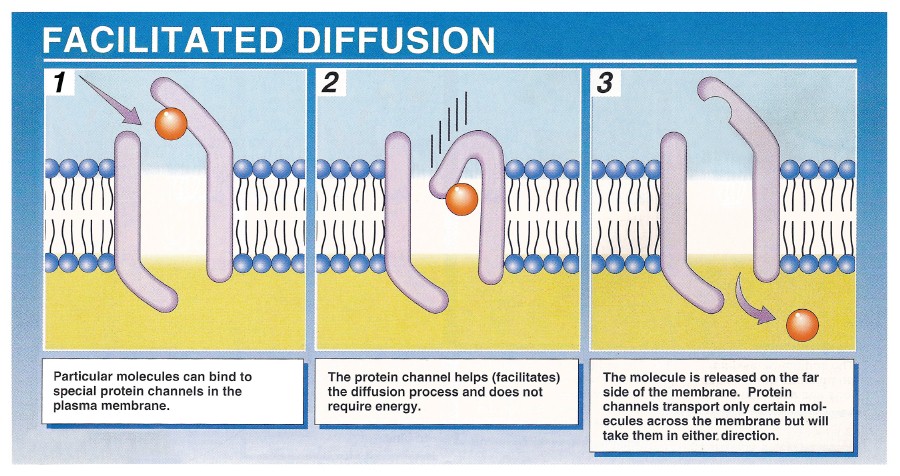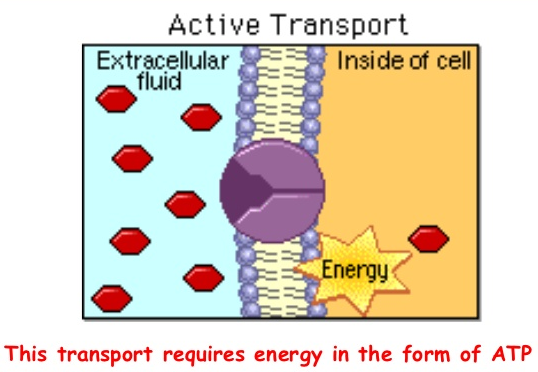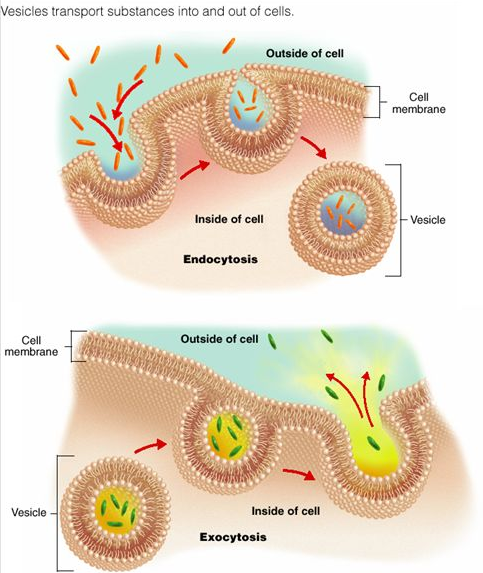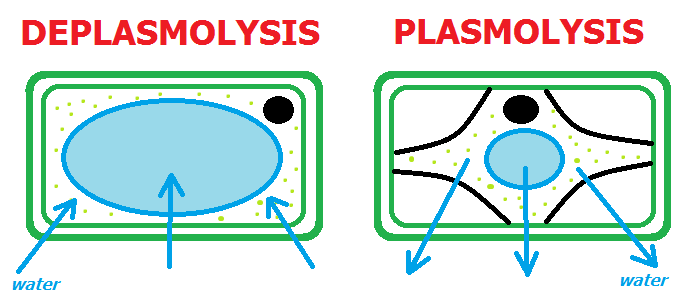Transport in Plants
Table of Content |
|
|
 Transportation in plants is an interesting process. It includes the transport of all the nutrients and water to all parts of the plant for its survival. In case of plants, the biggest concern is the transport of water and it terminates at the limiting factor depending on its growth. To overcome this problem, a tree uses several processes like Translocation, Storing, Absorption and Utilization of water
Transportation in plants is an interesting process. It includes the transport of all the nutrients and water to all parts of the plant for its survival. In case of plants, the biggest concern is the transport of water and it terminates at the limiting factor depending on its growth. To overcome this problem, a tree uses several processes like Translocation, Storing, Absorption and Utilization of water
Definition of Transportation in Plants
Transportation is the process of transporting water, minerals and food to all parts of the plant body.
Transport in plants occurs at three levels:
-
The uptake and release of water and solute by individual cells.
-
Short distance transport of substances from one cell to another.
-
Long distance transport of sap within xylem and phloem.
Definition of Translocation
Translocation is the movement of materials from leaves to other tissues throughout the plant. Plants produce carbohydrates (sugars) in their leaves by photosynthesis, but non-photosynthetic parts of the plant also require carbohydrates and other organic and nonorganic materials.
In other words, translocation is the movement of water and other nutrients from soil to all parts of the plant.
Direction of Transport
Direction of transport is an important aspect in plants. In case of rooted plants, transport in xylem of both minerals and water is unidirectional from roots to stems. In this, mineral and organic nutrients undergo multidirectional transport. It includes the organic compounds that are formed during photosynthesis are exported to all parts of the plants along with storage organs. Plant growth regulators, hormones and chemical stimuli are also transported in unidirectional or polarized manner, in very small amounts, from where they are formed to other parts.
Means of Transport
There are three means of transport as follows:
-
Diffusion
-
Facilitated diffusion
-
Active Transport
-
Diffusion –
It is an important process in the life of a plant. Movement by this process is passive and may be from cell to cell or from one part of the plant to the cell. Diffusion process does not result in the expenditure of energy and movement of molecules takes place in random fashion.
The substance move from higher concentration region to lower concentration region. It is a slow process and occurs most likely in liquid and gases. In plants, diffusion is the only means of transport for gases. The rate of diffusion depends on the gradient of concentration, pressure, temperature and permeability of membrane separating them. Following figure shows the diffusion of water vapor from higher concentration to lower concentration.
-
Facilitated Diffusion –
Presence of gradient is important for the process of diffusion and its rate depends on the size of substance. It is important to note that smaller substance diffuse faster as compared to larger ones. Along with size, the rate of diffusion also depends on solubility in lipids and the major constituent of the membrane. The substances with hydrophilic moiety are difficult to pass via membrane and therefore, its movement is facilitated. In this, the site is provided by membrane protein at which such molecules are able to cross the membrane. The concentration gradient is already present for molecules to diffuse even if facilitated by protein and this process is referred as facilitated diffusion.
In this process, special protein helps the substance move across the membrane without the use of energy of ATP. It does not cause net transport of molecules and the rate of transport is maximized when all the protein transporters are being used.
Following figure explains the entire process of facilitated diffusion in detail. At the initial step, molecules bind to special protein channel in plasma membrane, and then this protein channel helps the diffusion process and does not require energy. Finally, the molecule is released on the far side of membrane and the protein channel transports only certain molecules across the membrane.
Facilitated diffusion is the passive process and include three type of transport protein namely Uniport, Symport and Antiport. “The Uniport proteins carry a single solute across the membrane. Symport proteins translocate two different solutes simultaneously in the same direction and Antiport proteins exchange to solute by transporting one into the cell and one out of the cell.” All of these types are explained via figure below:
-
Active Transport –
Active transport use energy in the form of ATP in the process of pumping molecules against the concentration gradient. The ATP donates a phosphate to a particular gateway molecule which then pumps the desired molecule across membrane, even if goes opposite concentration gradient. Thus, the energy of ATP is used to drive the pump. Following figure shows the active transport in cell:
Water Potential
Plants use water potential to transport water to leaves and this helps in carrying out photosynthesis. The term water potential is defined as “the measure of potential energy in water and drives the movement of water through plants.” Following equation represents the water potential in plants:
![]()
Where,
ΨS is solute potential,
Ψp is pressure potential,
Ψg is gravitational potential and
Ψm is capillary potential
Water always moves from higher water potential to lower water potential. The two main components of water potential are Solute Potential and Pressure Potential.
Solute potential is also referred as osmotic potential. It is negative in plant cell and zero in case of distilled water. Typical values of solute potential of cytoplasm are -0.5 MPa to -1.0MPa. Solutes can reduce water potential by consuming potential energy available in water. Solute molecules can dissolve in water because water molecules can bind to them by hydrogen bonds.
Pressure potential in plants is positive. In plant cell, pressure potential is the pressure exerted by the rigid cell wall that can limit or stop further uptake of water.
Water molecules have kinetic energy. Higher the concentration of water in the system, greater will be the kinetic energy or water potential. Thus, we can conclude that pure water has highest water potential. Consider the two systems containing water. When both these systems come in contact with each other, random movement of molecules takes place such that the water from higher energy will move to lower energy system. This process of movement of molecules down the gradient of free energy is referred as diffusion.
Osmosis / Definition of Osmosis
“Osmosis is the spontaneous movement of a solvent (water) through a Cellular Membrane. This is a special kind of diffusion that moves water molecules from a place of higher concentration to a place of lower concentration to create a stable and equal cellular environment.”
The cell of the plant is surrounded by cell wall and cell membrane. The wall of the cell is freely permeable to substances in solution and water and therefore, is not a barrier for the movement. The plant cell contains large vacuole, with the vascular sap, and contributes to the solute potential of the cell. In plant cell, the membrane of vacuole, cell membrane and tonoplast are the important determinants of the movement of molecules.
Following figure shows osmosis in plant and animal cell in different type of solution. We can clearly observe that in case of isotonic solution, there is not net movement of water. In hypotonic solution, water mainly enters the cell and may bursts in case of animal cells and in case of plants vacuoles are filled with water, turgor pressure develops and chloroplasts are seen next to the cell wall. In the last condition, i.e. hypertonic solution, in animal cells water mainly leaves the cell and in plant cells vacuoles lose water, the cytoplasm shrinks and chloroplast are seen in the center of the cell.
 Osmosis occurs spontaneously in a reaction to the spontaneous force. The rate of osmosis and net direction depends on concentration gradient and pressure gradient. Water moves from higher concentration to lower concentration until equilibrium is reached. At the equilibrium state, equilibrium of both the chambers is achieved. Following figure shows the process of Osmosis via Semi Permeable Membrane.
Osmosis occurs spontaneously in a reaction to the spontaneous force. The rate of osmosis and net direction depends on concentration gradient and pressure gradient. Water moves from higher concentration to lower concentration until equilibrium is reached. At the equilibrium state, equilibrium of both the chambers is achieved. Following figure shows the process of Osmosis via Semi Permeable Membrane.
Plasmolysis / Definition of Plasmolysis
The term Plasmolysis is defined as “the contraction of the protoplasm of cells within plants due to loss of water through osmosis.”
In other words, the behavior of plant tissues or cells regarding movement of water depends on surrounding solution and this process occurs when water is drawn out of the cell through the process of osmosis. Osmosis occurs when the cell has higher concentration as compared to its surroundings.
Plasmolysis depends on the three type of solution:
-
Isotonic – It is the condition when the external solution balances the osmotic pressure of cytoplasm.
-
Hypotonic – In this case, external solution is dilute as compared to cytoplasm.
-
Hypertonic – In hypertonic, external solution is more concentrated.
Cell swells in case of hypotonic while it shrinks in hypertonic ones. Following figure shows the three type of solution:
Imbibition
It is a special type of diffusion which includes the absorption of water by solids, called colloids, resulting in enormous increase in volume.
Example of Imbibition: Absorption of water by dry wood and seeds are the examples of imbibition.
How do Plants Absorb Water?
Plants absorb water with the help of roots. The absorption of minerals and water is more specifically the function of root hairs that are present in millions at the tip of roots. These hairs are thin – walled slender extensions that increase the surface of absorption. Once the water is absorbed by root hairs, it moves deeper in the root layers via two different pathways:
-
Apoplast pathway
-
Symplast pathway
The Apoplast Pathway is the condition when water takes the route from cell wall to cell wall and not entering cytoplasm at any point of time.
On the other hand, Symplast Pathway is the pathway where water moves between cytoplasm of adjacent cells.
Following image explains the movement of both the above discussed pathways, whereby in apoplast pathway, water takes the route from cell wall and in symplast water moves between cytoplasm and adjacent cells:
Water Movement up a Plant
The water is moved/ transported in various parts of the plants, via different processes. It is important to understand if the transport is active or passive. Moreover, it is also the matter of concern that the water moves against gravity in the stem and from where this energy is achieved. This question can be answered via Root Pressure.
Root Pressure:
As different ions are transported in vascular tissues via active process, the pressure inside the xylem increases. This positive pressure is regarded as root pressure and this pressure is responsible for pushing up water to the small heights in the stem. The root pressure provides only modest push but does not play an integral role in water movement in case of tall trees. The greatest contribution of root pressure is to re-establish to chain of water molecules in the xylem that results in transpiration and thus, transpiration pull is the root cause of water movement in the tall trees.
Transpiration Pull:
Plants do not have any circulatory system, but the flow of water upward via xylem is achieved by fairly high rates and that is upto 15 mts/ hr. According to researchers, water is “Pulled” through the plant and this driving force is transpiration from the leaves. It is termed as cohesion – tension – transpiration pull model of water transport.
Transpiration / Definition of Transpiration
“Transpiration is the process by which moisture is carried through plants from roots to small pores on the underside of leaves, where it changes to vapor and is released to the atmosphere. Transpiration is essentially evaporation of water from plant leaves.”
In other words, transpiration is the evaporative loss of water that occurs primarily through stomata in leaves. Following diagram shows the transpiration process in plants whereby water is absorbed by roots. The water molecules travels through plant and water is evaporated from the surface of leaves.
Along with the loss of water vapor in transpiration, exchange of carbon dioxide and oxygen also occurs in the pores of stomata. These stomata are open during day and closed in the night. The opening and closing of stomata is because of turgidity of guard cells. The inner wall of guard cell is elastic and thick and called as Stomatal Aperture.
Transpiration is affected by light, temperature, wind speed and humidity. Several plant factors also affect transpiration such as distribution and number of stomata, percent of open stomata, canopy structure and water status of plant. The transpiration driven ascent of xylem sap depends on physical properties of water, which are as follows:
-
Cohesion – It is the mutual attraction between water molecules.
-
Adhesion – It includes the attraction of water molecules to polar surface.
-
Surface tension – In this, water molecules are attracted in liquid phase which is more than the water in gaseous phase.
The above listed properties results in high tensile strength of water, i.e. an ability to resist a pulling force, and high capillarity, i.e. the ability to rise in thin tubes. Added to this, tracheid and vessel elements are the two elements via which the capillarity of plants is aided.
 The process of photosynthesis requires water and the system of xylem helps in the supply of water from roots to leaf veins. During this process, the evaporation of water takes place via stomata, thin film of water result in pulling effect in leaves from xylem. Because of lower concentration of water vapor in atmosphere in comparison to substomatal cavity and intercellular spaces, water gets diffused in the surroundings and creates a “pull”. This process is explained in the figure right hand.
The process of photosynthesis requires water and the system of xylem helps in the supply of water from roots to leaf veins. During this process, the evaporation of water takes place via stomata, thin film of water result in pulling effect in leaves from xylem. Because of lower concentration of water vapor in atmosphere in comparison to substomatal cavity and intercellular spaces, water gets diffused in the surroundings and creates a “pull”. This process is explained in the figure right hand.
The above figure shows the movement of water in leaf, where evaporation from the leaf set up the pressure gradient between outside air and the air spaces of leaf. This gradient is transmitted in photosynthetic cell and also on water – filled xylem in the leaf vein.
Uptake and Transport of Mineral Nutrients
In plants, carbon and oxygen is obtained primarily from carbon dioxide and rest nutritional requirements are fulfilled from absorbing nutrients from soil.
Uptake of Mineral Ions – Like water, all the minerals cannot be absorbed by roots. The uptake of mineral ions depends on two conditions:
-
The minerals are present in soil in the form of charged ion. These ions cannot transport or move across the cell membranes.
-
The level of concentration of mineral ions in the soil. It must be lower as compared to concentration of that mineral in roots.
Majority of the minerals are absorbed via active absorption via roots into cytoplasm of epidermal cells. This active uptake of ions is partly responsible for the water potential gradient in roots and results in osmosis. Added to this, some ions also move passively in the epidermal cells. Thus, it can be said that absorption of ions is carried out via both active and passive transport.
Following diagram shows the uptake of mineral ions via root hairs from soil.
Translocation of Mineral Ions – When the ions reach xylem via active or passive uptake or combination of two, the further transport of minerals to all parts of the plants is carried out through transpiration stream. These ions are frequently remobilized and older leaves export much of their nutritional content to younger leaves. The most readily mobilized elements are Nnitrogen, Potassium, Sulphur and Phosphorus.
Phloem Transport: Flow from Source to Sink – Food (sucrose) is transported from source to sink by Vascular Tissue Phloem.
Frequently Asked Question(FAQs)
Q1. How Facilitated Diffusion works?
Sol. The process of diffusion is controlled by control of movement of particular type of molecules. Some molecules are able to freely pass the cell membrane while larger ions and polar molecules are not able to diffuse through lipid bilayer. In facilitated diffusion, a special carrier protein along with central channel act as the selective corridor and this helps the molecules to move across the membrane.
Q2. What are Aquaporins in plants?
Sol. “Aquaporins are channel proteins present in the plasma and intracellular membranes of plant cells, where they facilitate the transport of water and/or small neutral solutes (urea, boric acid, silicic acid) or gases (ammonia, carbon dioxide).” These are present in all life forms and allow efficient permeation of water.
Q3. What is Vesicle Transport?
Sol. Some particles or molecules are very large which makes them unable to pass through plasma membrane. So, cells use two active transport processes to move these macromolecules in and out of the cell. These are two types of vesicle transport, i.e. Endocytosis and Exocytosis. “Endocytosis is the process in which the cell membrane is invaginated forming a vesicle that contains extracellular medium.” In this process, the molecules to be transported are enclosed in tiny portions of cell membrane that forms vesicles. These enclosed molecules are then bought into the cell by using energy. On the other hand, “Exocytosis is used by the cells to release secreted proteins to the exterior. Expulsion of waste products takes place by exocytosis. This process is the reverse of endocytosis in which the cell membrane fuses with the particle and releases the contents outside.”
Following figure shows endocytosis and exocytosis:
Q4. Compare between three different transport processes, i.e. Simple diffusion, Facilitated transport and Active transport
Sol.
|
Property |
Simple Diffusion |
Facilitated Transport |
Active Transport |
|
Requires special membrane proteins |
No |
Yes |
Yes |
|
Highly selective |
No |
Yes |
Yes |
|
Transport saturates |
No |
Yes |
Yes |
|
Uphill transport |
No |
No |
Yes |
|
Required energy from ATP |
No |
No |
Yes |
Q5. What occupies space between cell wall & shrunken protoplast in the plasmolysed cell?
Sol. When the cell is placed in isotonic solution, no net flow of water takes place inside or outside the cell. When the water flow in and out of the cell, and are in equilibrium, the cells are said to be flaccid. On the contrary, when cells are placed in hypotonic solution, water diffuses into the cell which exerts the pressure on the wall of cell and this pressure is referred as turgor pressure. Added to this, “the pressure exerted by protoplast due to entry of water against rigid cells is referred as pressure potential.” Due to the rigidity of the cell wall, cells do not rupture and this turgor pressure results in enlargement of cell and extension growth of cells.
Q6. What are Plasmolysis & Deplasmolysis?
Sol. Plasmolysis refers to “the shrinking of the protoplasm due to loss of water by osmosis.” This phenomenon occur when the cell has higher amount of water molecules as compared to the outside; this movement of water molecules results in the shrinkage of protoplasm and this process can be reversed by placing the cell in hypotonic solution as this will result in entering of water into cell and normal size of protoplasm is thereby achieved. This reversal process of plasmolysis is known as Deplasmolysis.
Following diagram pictorially represents the plasmolysis and deplasmolysis:
Q7. Define Guttation.
Sol. “Guttation is the exudation of drops of xylem sap on the tips or edges of leaves of some vascular plants, such as grasses. Guttation is not to be confused with dew, which condenses from the atmosphere onto the plant surface.” Transpiration usually does not occur in night due to the closure of stomata, but when the level of moisture is high in soil, the water enters in the plant roots. This water is accumulated in plant, resulting in increase in root pressure. This root pressure forces some water to exude from the edge structures or special leaf tip. The process of guttation is noticeable in case of suppression of transpiration and the increase of relative humidity during night.
Following image shows the guttation on leaves:
Watch this Video for more reference
To read more, Buy study materials of Transport in Plants comprising study notes, revision notes, video lectures, previous year solved questions etc. Also browse for more study materials on Biology here.
View courses by askIITians


Design classes One-on-One in your own way with Top IITians/Medical Professionals
Click Here Know More

Complete Self Study Package designed by Industry Leading Experts
Click Here Know More

Live 1-1 coding classes to unleash the Creator in your Child
Click Here Know More

a Complete All-in-One Study package Fully Loaded inside a Tablet!
Click Here Know MoreAsk a Doubt
Get your questions answered by the expert for free











